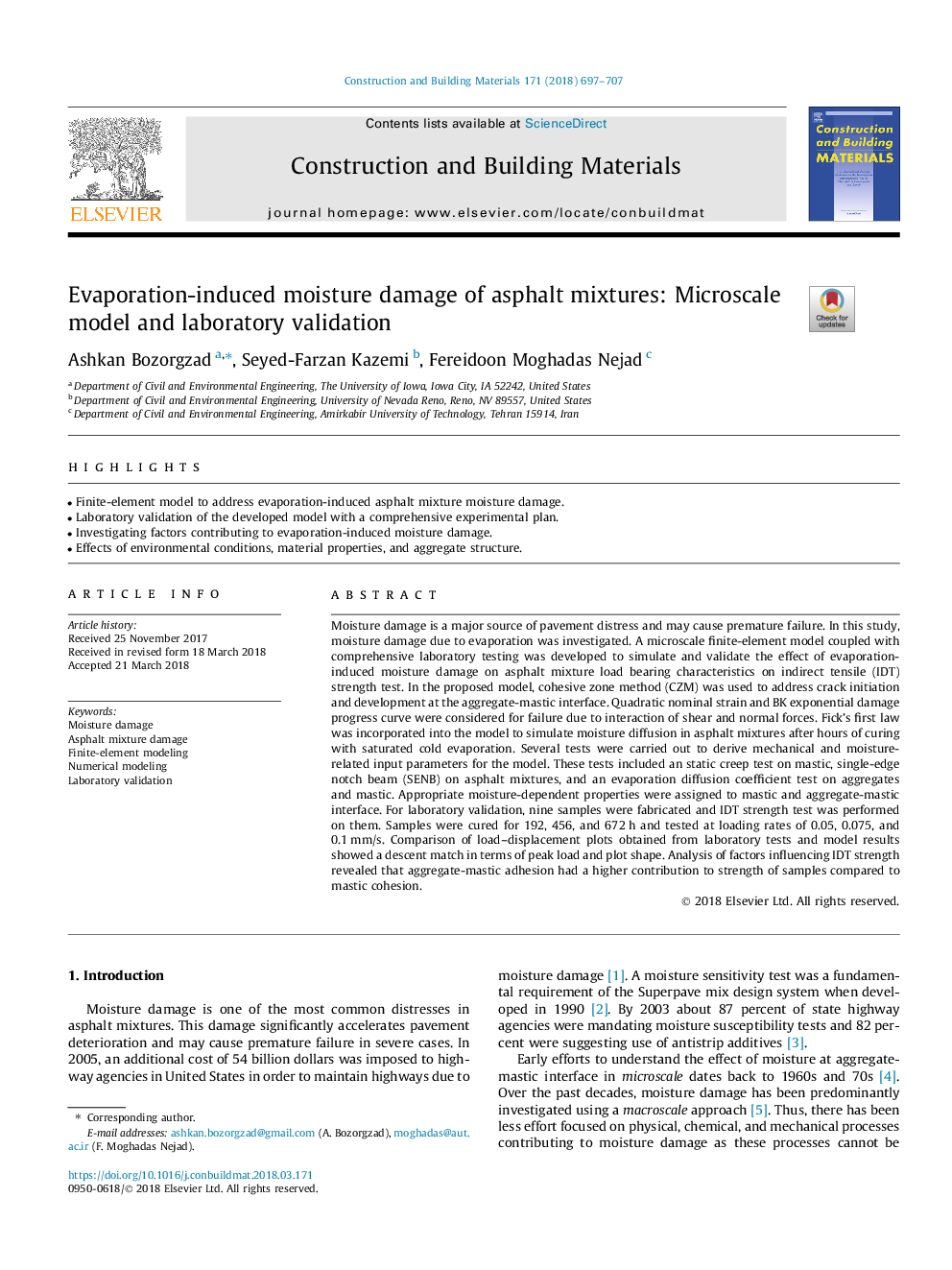| Article ID | Journal | Published Year | Pages | File Type |
|---|---|---|---|---|
| 6714352 | Construction and Building Materials | 2018 | 11 Pages |
Abstract
Moisture damage is a major source of pavement distress and may cause premature failure. In this study, moisture damage due to evaporation was investigated. A microscale finite-element model coupled with comprehensive laboratory testing was developed to simulate and validate the effect of evaporation-induced moisture damage on asphalt mixture load bearing characteristics on indirect tensile (IDT) strength test. In the proposed model, cohesive zone method (CZM) was used to address crack initiation and development at the aggregate-mastic interface. Quadratic nominal strain and BK exponential damage progress curve were considered for failure due to interaction of shear and normal forces. Fick's first law was incorporated into the model to simulate moisture diffusion in asphalt mixtures after hours of curing with saturated cold evaporation. Several tests were carried out to derive mechanical and moisture-related input parameters for the model. These tests included an static creep test on mastic, single-edge notch beam (SENB) on asphalt mixtures, and an evaporation diffusion coefficient test on aggregates and mastic. Appropriate moisture-dependent properties were assigned to mastic and aggregate-mastic interface. For laboratory validation, nine samples were fabricated and IDT strength test was performed on them. Samples were cured for 192, 456, and 672â¯h and tested at loading rates of 0.05, 0.075, and 0.1â¯mm/s. Comparison of load-displacement plots obtained from laboratory tests and model results showed a descent match in terms of peak load and plot shape. Analysis of factors influencing IDT strength revealed that aggregate-mastic adhesion had a higher contribution to strength of samples compared to mastic cohesion.
Related Topics
Physical Sciences and Engineering
Engineering
Civil and Structural Engineering
Authors
Ashkan Bozorgzad, Seyed-Farzan Kazemi, Fereidoon Moghadas Nejad,
